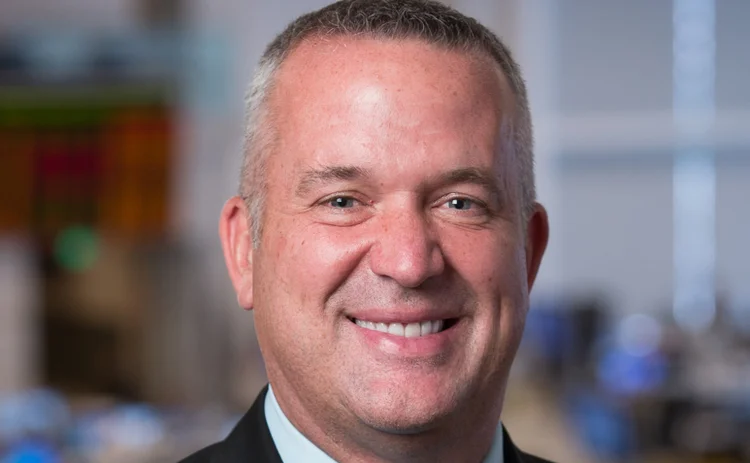
Oil & products house of the year: BP
Energy Risk Awards 2019: Global structured products team reaps rewards of new approach

For the global structured products (GSP) team at BP – winner of this year’s oil and products house of the year award – success in 2018 was the result of a three-year process that involved a substantial re-tooling of the business following the 2014–15 oil price rout.
“Prior to that, a lot of our business was in flow hedging – for airlines, cruise lines and so on,” says Ryan McGeachie, Houston-based chief commercial officer for BP GSP. “That’s not as prevalent as it was. In response, we looked to expand our remit by trying to understand our customers’ needs better … and understand what challenges they are facing.”
For BP’s risk management and structured products offering, a key advantage over its competitors in the financial sector is its deep involvement in physical energy extraction, refining and marketing, says McGeachie.
For many of its clients, the biggest challenge is what McGeachie describes as the “pivot in the market”, in response to International Maritime Organization rules that come into force next year, requiring ships to use low-sulphur fuel oil or fit expensive scrubbers to remove the pollutant from the smoke stack. “This is a big issue; it’s a drastic change to the market,” he says.
Despite the lack of a market in 0.5% sulphur fuel, or even established specifications for the new grade, BP’s physical presence allowed it to structure the first 2020 fixed-price physical hedge of low-sulphur fuel, for an Asian shipping firm, a deal that helped the oil major win last year’s Energy Risk Asia oil and products house award. The structuring relied upon BP’s ability to absorb basis risk through its international refining operation.
Since that first trade during the first half of 2018, the hedge – and variations on the theme – has become “a relatively standard product for us”, says Iain Lawson, head of structured products, eastern hemisphere, at BP in Singapore.
But the market response to the new regulation is a moving target. “Marpol is evolving week by week,” says Lawson, referring to the international convention that sets pollution limits on maritime shipping.
For example, concerns are emerging about the quality of blended low-sulphur fuel – and the risk that some blended fuel might meet the 0.5% specification but may cause longer-term problems with ship engines if it is not blended to a sufficiently high quality.
Here, it is BP’s involvement in refining, blending and, through BP Shipping, consuming marine fuels, that give its customers confidence in its holistic risk management offering, says Firdaus Panthaki, the London-based chief commercial officer for GSP.
“Marpol is making fuel oil less commoditised,” says Lawson. Big shipping companies are likely to be “a lot happier buying blended fuel from someone like BP with a reputation to protect, rather than someone who has bashed together a blend that just meets the specifications but may not even be in business by the time any problems show up”.
The integrated capabilities at BP allows our downstream, trading and risk management teams to work together to absorb risks and provide our customers a way to manage them in a way that was not previously possible in the market
Erik Mason, BP GSP
Another innovation in response to customer demand is BP’s relatively new risk management offering in the US to hedge asphalt exposure. By leveraging its physical footprint in refining and logistics together with the company’s sales and marketing reach and trading capabilities, BP is providing construction companies in the US with a means to lock in term asphalt prices.
In the past, the lack of a bitumen price index has made systematic hedging impossible, leaving construction firms exposed to fluctuating asphalt prices when they bid on fixed-price infrastructure projects. These projects typically take one to two years to complete, but can extend out to three or four years in duration. The BP hedge allows them to lock in a key input price and provide sharper bids, providing a competitive advantage. “The result has been profitable growth for our customers, while allowing BP to grow our retail business and strengthen customer relationships,” says Erik Mason, Chicago-based managing director of GSP.
“The integrated capabilities at BP allows our downstream, trading and risk management teams to work together to absorb risks and provide our customers a way to manage them in a way that was not previously possible in the market,” he adds. “It gives our customers confidence negotiating forward paving contracts knowing they can hedge one of their largest costs and risks.”
“It’s our job to evolve and keep finding new products that are better than the products before them,” says Mark Galicia, commercial manager, structured products. “But it’s also service: a lot of our products have financial structures within them, but they also include physical delivery. That’s where BP sets itself apart from our banking counterparts – we can combine the physical and financial offer.”
The decision of the team to look at the business differently and be more proactive is now reaping rewards, Galicia says. “It hasn’t been quick. But last year we saw the results of three years of hard work pay off.”
Only users who have a paid subscription or are part of a corporate subscription are able to print or copy content.
To access these options, along with all other subscription benefits, please contact info@risk.net or view our subscription options here: http://subscriptions.risk.net/subscribe
You are currently unable to print this content. Please contact info@risk.net to find out more.
You are currently unable to copy this content. Please contact info@risk.net to find out more.
Copyright Infopro Digital Limited. All rights reserved.
As outlined in our terms and conditions, https://www.infopro-digital.com/terms-and-conditions/subscriptions/ (point 2.4), printing is limited to a single copy.
If you would like to purchase additional rights please email info@risk.net
Copyright Infopro Digital Limited. All rights reserved.
You may share this content using our article tools. As outlined in our terms and conditions, https://www.infopro-digital.com/terms-and-conditions/subscriptions/ (clause 2.4), an Authorised User may only make one copy of the materials for their own personal use. You must also comply with the restrictions in clause 2.5.
If you would like to purchase additional rights please email info@risk.net
More on Commodities
Energy Risk Asia Awards 2024: The winners
Winning firms adapt to change with exemplary risk management skills
Foreign funds are bulls in China’s onshore commodity futures
Growing participation from overseas investors is boosting liquidity in what’s already a boom market
Energy Risk Software Rankings 2024: IT demands increase amid rising risk
Heightened geopolitical and credit risk increase requirements on commodities software
Energy Risk Asia Awards 2023: The winners
Winning firms demonstrate resilience and robust risk management amid testing times
ION Commodities: addressing the market’s recent pain points
Energy Risk Software Rankings winner’s interview: ION Commodities
Energy Risk Commodity Rankings 2023: adapting to new market dynamics
Winners of the 2023 Commodity Rankings provided reliability when clients faced extreme change
Energy Risk Software Rankings 2023: managing uncertainty
Unpredictable markets make CTRM software choices key
Navigating the volatility and complexity of commodity markets
Commodity markets have experienced significant challenges since the Covid-19 pandemic, the conflict in Ukraine and the subsequent sanctions imposed on Russia. These unprecedented events have caused fluctuations in supply and demand, disrupted global…







